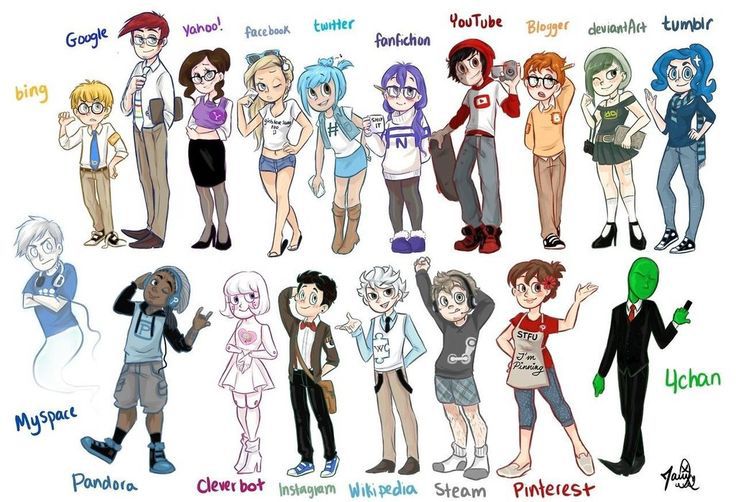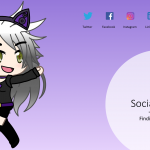[Part 3 of 9: The Social Animal on Social Media, Part 1, Part 2, Part 4, Part 5, Part 6, Part 7, Part 8, Part 9]
In his classic social psychology book, The Social Animal, Elliot Aronson says that we live in an age where mass communication is also mass persuasion. Radio, television, books, magazines, and newspapers, all have someone trying to educate us and convince us to buy a product, or believe their version of what is true.
The same can be said of social media. As well as those links to newspapers, television and magazines forwarded by our network, we also have ads in our Facebook newsfeeds which are often linked to our Google or Amazon searches, and promoted tweets in our Twitter stream which recommend products targeted to our demographic, which is ascertained by the data we put online.
However, even in this age of social media many people still have their lives mediated by TV and newspapers even online, which means they are told where to focus online. Regularly now newspapers curate Tweets and create a story around them. Today the Daily Mail online has taken model Katie Price’s instagram photos about her new haircut and created a whole article around them. It is an easy way to create news and attract viewers. Attracting viewers and ratings, Aronson says, is still a major factor in deciding which stories to choose and claims that a director of the British Broadcasting Corporation (he doesn’t say which one) once said that television news is a form of entertainment.
News reports tend to focus on violence, terrorists, protesters, strikers and the police, because action is much more entertaining to watch than people behaving well, and it is the same with social media. The most popular type of information to share is information which surprises us in the form of stories, short videos, and images. Apparently, we all seek that twist in the tale.
The other types of information we share can be classified according to Maslow’s hierarchy of needs (or in this case Maslow’s hierarchy of social media):
- Physiological: Information that make users fearful or angry.
- Safety: Information that helps us or others and is useful.
- Social: We all want to be seen and heard, and to belong and feel loved.
- Esteem: We all want to look cool so share our new yoga pants or smart knowledge because we need society to respect us and we like to respect and follow others.
- Self-actualization: We like to share compelling narratives.
We rarely share anything without some motivation so why would media outlets be any different? The wish to get ratings is all important so that breaking news and follow ups create yet more news and higher ratings. As Aronson says: Selective emphasis puts the media in the position of determining subsequent events – not simply reporting them. He cites examples of copycat poisonings and car crashes in the US. A similar UK example is the Bridgend hangings and an article in Vanity Fair says: Publicity dramatically accelerates the spread of the contagion.
We are all affected and influenced by the media, even if we think we are not, and not just news reporting, but in the advice and products with which we are bombarded daily.
Research has show that the more familiar an item is, the more attractive it is to us. If a person has seen washing powder adverts for one brand and is overwhelmed in the supermarket, they will simply reach for that most familiar washing powder.
This phenomena applies to everything from US presidential candidates to toothpaste which is why presidential campaigns cost such a lot of money. The candidates want to be familiar – the one people reach for when it comes time to vote.
It works the same way with catch phrases and sound bites, which is why so much money is spent on them. We are more likely to remember a rhyming phrase than non rhyming phrase and as such it becomes familiar to us.
But it is not just familiarity. It also who the messenger is and how they look which influences us. This approach was discovered by the sales people at Wheaties and their breakfast of champions as early as the 1930s. In 2010 The Telegraph published a list of celebrities’ fees paid by local councils in order to encourage the uptake of certain council programmes. Keith Chegwin encouraged locals to recycle their rubbish and Daley Thompson wanted everyone to use the new sports facility.
We are influenced by attractiveness and likeability – if the above two don’t do it for you, then think of your favourite celebrity and what they endorse: perfume, underpants, broadband suppliers. Aronson says that we behave as though we were trying to please that person, and trust them especially if say, David Beckham has nothing to gain from us buying Calvin Klein underpants, he just likes to see Justin Bieber wearing them, we might be more readily influenced too: Bieber looks good in Calvin Klein, even David Beckham said so. Perhaps Calvin Klein would make us look good too.
This idea works really well on Instagram or other photographic social media. We have an influencer: someone who has a lot of followers, or indeed a celebrity like Beckham or Bieber, and we see them looking good or saying that something is good, and so we want to look good too. The best bit about social media is that anyone could be the next influencer. It is all up for grabs.
It is not just how people look, it is how the message resonates with us, especially if it frightens us. Aronson says that all other things being equal, the more frightened a person is by a communication, the more likely he or she is to take positive preventive action.
Fear appeal experiments show that fear-arousing messages which contain specific instructions about how, when, and where to take action, are much more effective than recommendations which do not give any advice. Like the Don’t die of Ignorance campaign in the 1980s in the UK. It became known as the most successful Public Health message ever. A follow-up leaflet was sent to every household in the country and a week of educational programming was scheduled so everyone was terrified but knew exactly how to practice safe sex.
In contrast, people cannot tolerate living in a state of constant anxiety. Thus, if vague warnings recur and prove to be false alarms, most of us will eventually drift into a state of denial and become complacent. When I worked in a delicatessen in the 90s, there was the threat of bombs weekly. The first time, I ran out of the building, nearly screaming. However, after a few weeks, I would take my time, pop upstairs to get my purse, or perhaps go to the toilet. Bomb threats had become welcome tea-breaks.
People need some fear and specific instructions, or indeed they need anecdotal advice, when someone tells you a vivid true story, then you sit up and pay attention. Indeed, fictional journalism is a whole field which developed from the personal anecdote, because journalists know that a personal story wins people over much better than statistical information.
The final factor in how people get persuaded is, the initial position of the audience. If the audience is already predisposed to believe an argument, a one-sided presentation has a greater impact than a two-sided presentation. If the audience is leaning in the opposite direction, then a two-sided refutational argument is more persuasive. Most politicians are aware of this phenomenon which is why the speeches they deliver at their party conferences are very different from the speeches they give elsewhere.
However, there are at least four ways in which the members of an audience can stop feeling uncomfortable if they are being presented with an argument they don’t like. They can:
- Change their opinion, something they might do if they realise they may become social outcasts and it’s best to conform.
- Try and persuade the presenter to change his or her opinion.
- Find other people who share their views, in spite of what is being said.
- Convince themselves and the people around them that the presenter is an idiot or immoral or untrustworthy.
Actions 2,3,4 can be hard to do, but this has become so much easier with social media. You can always find someone to join forces with, because when we have a choice of say 307 million people on Twitter, someone somewhere will have a similar opinion to someone else, even if it outlandish. And, nowadays we can regularly witness trolling and abuse online as people perform action 4.
Some individuals would rather discredit and abuse someone else than allow them to go on expressing an opinion, contrary to their own. One explanation for this is that we are no longer dealing with simple opinions. Aronson says that attitudes in people – which are a factor of experience, education, and background – are much harder to change than simple opinions. Human thinking is not always logical and can lead to all sorts of random results, something we will explore further in Part 4.
[Part 4]



